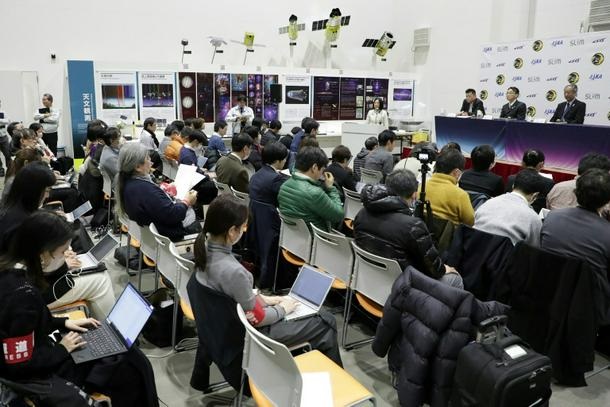In a significant development, Japan has announced that there is a possibility of restoring power to its Moon lander after it was switched off following a successful touchdown. The Japan Aerospace Exploration Agency (JAXA) conducted the unmanned Smart Lander for Investigating Moon (SLIM) mission, which has been nicknamed “Moon Sniper” due to its precision landing capabilities. With this achievement, Japan becomes the fifth country to achieve a soft lunar landing.
The touchdown occurred at 20 minutes past midnight on Saturday, and although JAXA was unable to confirm if the lander’s solar batteries were generating power, they were able to receive technical and image data from the descent and the lunar surface. JAXA stated that they are relieved and excited after confirming the acquisition of significant data. According to telemetry data, SLIM’s solar cells are currently facing west, indicating the possibility of power generation if sunlight hits the Moon from that direction. JAXA is now preparing for the restoration of power.
This successful Moon landing by Japan comes at a time when several countries and private firms are launching new lunar missions, 50 years after the first human Moon landing. However, such missions are not without their challenges, as crash landings and communication failures are common. Only four other countries have managed to reach the Moon so far: the United States, the Soviet Union, China, and most recently, India.
To ensure that the restart of the lander is not hampered, JAXA disconnected SLIM’s battery just before 3:00 am when it had 12 percent power remaining. This precautionary measure was taken to avoid any potential difficulties during the restoration process.
The successful landing and the possibility of restoring power to the Moon lander marks a significant achievement for Japan and its space agency. It demonstrates their technological prowess and their commitment to exploring and understanding the Moon. The data collected from this mission will undoubtedly contribute to our knowledge of the lunar surface and pave the way for future lunar exploration endeavors.
Following the successful touchdown of Japan’s Moon lander, the Japan Aerospace Exploration Agency (JAXA) is currently conducting a detailed analysis of the data to determine if the craft achieved its goal of landing within 100 meters of the intended spot. The mission aimed to reach a crater where the Moon’s mantle, the inner layer beneath its crust, is believed to be exposed on the surface. By studying the rocks in this area, JAXA hoped to gain insights into the Moon’s potential water resources, which could be crucial for future lunar base construction and as stopovers on the way to Mars.
During the mission, two probes detached successfully from the lander. One probe carries a transmitter, while the other is a mini-rover designed to roam the lunar surface and transmit images back to Earth. This innovative mini-rover, slightly larger than a tennis ball, was co-developed by the company responsible for Transformer toys, adding a unique touch to the mission.
JAXA announced on Monday that they are preparing to share further updates and results from the mission later this week, along with the status of the SLIM craft. While not everything went according to plan, JAXA expressed optimism about the potential for producing significant results and expressed satisfaction with the successful landing.
It is worth noting that this is not Japan’s first attempt at lunar missions. In 2022, the country sent a lunar probe named Omotenashi as part of the United States’ Artemis 1 mission, which unfortunately did not succeed. Additionally, in April of this year, a Japanese startup called ispace made an unsuccessful attempt to become the first private company to land on the Moon. Their craft lost communication after what they described as a “hard landing.”
Despite these previous setbacks, Japan’s continued efforts in lunar exploration demonstrate their determination and commitment to pushing the boundaries of space exploration. The data collected from the SLIM mission, along with the experiences gained, will undoubtedly contribute to future missions and further our understanding of the Moon and its resources.
As we eagerly await the upcoming announcements from JAXA, the world remains captivated by Japan’s achievements in space exploration and their ongoing contributions to scientific discovery. The successful landing of the Moon lander and the potential discoveries it may bring us closer to unlocking the mysteries of our celestial neighbor.
















































